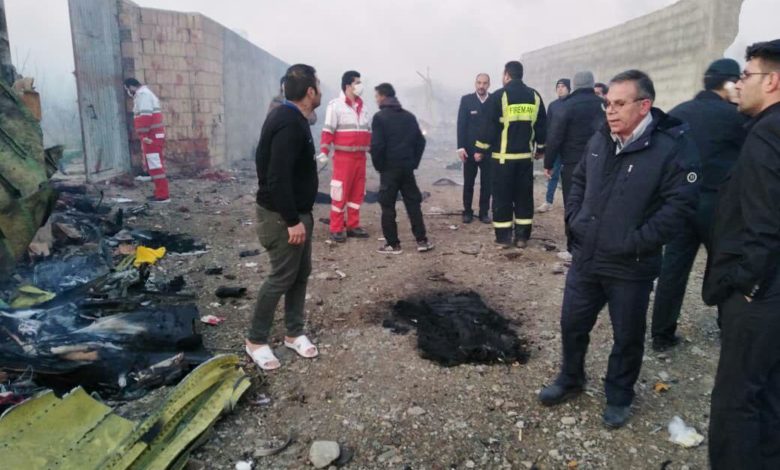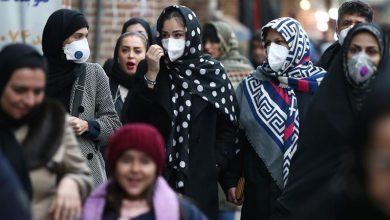
Air crash experts have raised serious concerns over the handling of the crash site of a Ukrainian airliner suspected to have been accidentally shot down by Iranian missiles, as fears grow that Tehran has sought to eliminate evidence from the area.
Graham Braithwaite, professor of safety and accident investigation at Cranfield University, said the Iranian handling of the crash site, including the apparent quick removal of evidence, raised “serious concerns over the integrity of the investigation.”
“Where you have flight recorders that tell you what has happened you can move quickly to clearing the site,” he explained. “But if the recorders are damaged [as the Iranians have said] then all you have is the forensic evidence at the site to tell you the story.”
Iran has invited investigators from Canada, Boeing and Ukraine to see the accident site on the outskirts of Tehran to prove the aircraft was not mistakenly targeted by Iranian air defences. It added that it will also welcome representatives of others countries whose citizens died on Ukrainian International Airlines Flight 752.
But according to a crew from the US outlet CBS News that reached the crash site by 9am on Thursday morning, it appeared to have been cleared of the plane’s debris. “Scavengers now picking the site clean,” said Elizabeth Palmer, a correspondent for the outlet. “No security. Not cordoned off. No sign of investigators.”
Braithwaite, who teaches a course in air accident investigations, said he was surprised that the Iranians had moved to clear the crash site before other interested parties, including Ukrainian, Canadian and other technical investigators had been able to make their own examination, which he said he would have been expected under the Annex 13 of the Chicago Convention, the international agreement that sets out protocols for crash inquiries.
The plane with 176 passengers and crew onboard went down shortly after taking off around 6.13am on Wednesday morning, about five hours after Iran had launched a volley of missiles at US forces stationed in Iraq, and while it was on high alert for possible retaliation.
Western intelligence sources told the Guardian on Thursday evening they believed the aircraft might have been shot down by two surface-to-air missiles in what one source described as “a tragic accident”.
Photographs taken the day of the crash showed heavy machinery being used to move larger pieces of debris. Iranian media outlets also published several photos and videos of the wide field of wreckage and personal belongings left by the crash.
It was unclear whether the removal of the debris was done in accordance with crash-investigations procedures to ensure important evidence is preserved.
Braithwaite said he was surprised to see images of an earthmover moving debris at the crash site as well as claims in the US media that the site had been left unsecured while local residents scavenged.
“It suggests poor site discipline at least, or wilful neglect,” he said. “If a site is picked clean you can’t put it back together again.”
He added that accident investigators were usually mindful of doing nothing that might compromise a criminal investigation, particularly relating to the chain of custody of evidence. “You would expect the protocols involved then to be of the highest standards, overseen by police or security forces,” he said.
Iranian officials continued to rebuff the allegations the aircraft was shot down on Friday. Ali Abedzadeh, the head of Iran’s Civil Aviation Organisation, said at a press conference in Tehran: “If [intelligence agencies] have findings with scientific support they should show this to the world.”
He said he had watched a video clip purporting to show the plane being hit by a missile before crashing to the ground but said “this cannot be confirmed from the scientific perspective”.
Speaking in London, Iran’s ambassador to the UK Hamid Baeidinejad said it was untrue that the crash site had been bulldozed and said the bodies had been removed but that relevant debris was being retained along with the black boxes. He did not specify if the wreckage was being kept at the crash site or taken elsewhere.
“[I am] disappointed that some countries including the UK, which do not have hard evidence, without access to the black box, the voice recordings, air plane wreckage and the technical engineers reports in Tehran airport, are rushing to judgement,” he said. “That only adds to the anxiety of the families”.
Hassan Rezaeifar, the head of the committee that oversees aviation accidents in Iran, said that contrary to earlier claims that the black boxes appeared to have been damaged by the crash, both appeared to be intact.
“We prefer to extract the data and download the data inside the country,” he said. “But if we come to the conclusion that the data may be damaged then we will carry out the process [overseas].”
Investigators would attempt to extract and analyse the black-box data on Friday, he added, but said the findings might take one or two months to be released.
The German foreign minister Heiko Maas encouraged Iran to be transparent. “It is important now that this is fully explained,” he said. “This cannot be hidden under the table. If that were to happen then it would breed new mistrust and that is the last thing we need now.”







